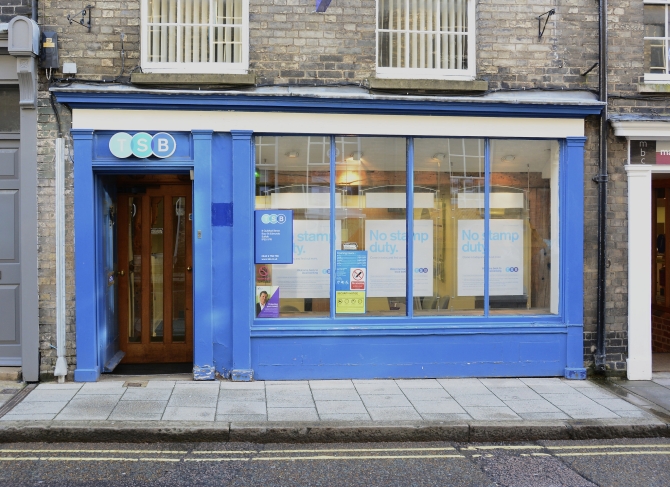Since the financial crisis banks have been disappearing from high streets across the country, with the vacated properties often opening as cafés or bars. However, TSB has announced this week it will defy the closure trend, and will instead open 30 new branches in locations yet to be disclosed.

The bank, which this time last year began trading as a separate company from the Lloyds Group, is currently in the process of negotiating the acquisition of the 30 sites, which experts believe will be primarily located in the South East and Midlands.
So far, TSB and Santander have been the only high street banking chains to examine options for branch growth as, according to the Campaign for Community Banking Services (CCBS), the rate of closures has escalated further this year.
During 2013, a total of 195 high street branches closed in the UK, with groups such as Barclays and HSBC often choosing to open smaller concessionary outlets within supermarkets or independent stores. However, so far this year, 331 bank branches have already closed, with 233 of these closures implemented by HSBC, NatWest/RBS, Barclays and Lloyds.
Although the news from TSB may seem positive at the outset, CCBS director Derek French believes that new openings may not necessarily benefit customers around the country.
He says; “Most of them will be in London and the South East, in areas where they haven’t got a branch and they need to open one pretty quickly.”
When TSB separated from Lloyds, it agreed to honour the former owner’s pledge not to close any branches which were identified as the “last bank in the community” before February 2015. As a result, the 631 branches operating at the time of the split remain functional to this day, with executives at TSB aiming for a network of around 700 branches in total.
Mr French has conceded that, due to technological advancements being more widely used by customers, TSB may have to examine the possibility of closing branches in the future. As of yet, the banking chain has made no announcement regarding this eventuality, only saying that closures would be considered if two branches are located close together.
Yet TSB may not have to consider closures if a pilot study conducted in the north of England proves successful nationwide. Unlike its closest rivals, TSB offers customers the ability to contact their local branches directly rather than redirecting to a central number for all enquiries, meaning that regional employment and productivity is likely to remain high.
With TSB rolling out the branch direct service to all of its outlets by the end of the year and initiating a programme of branch openings, it seems that it will remain one of the few high street banks to defy the trend for closures. However, with online and telephone banking continuing to grow in popularity, the future of this scheme is far from certain.
Previous Post
Pre-Referendum Investors demanding Scottish Exit Clause